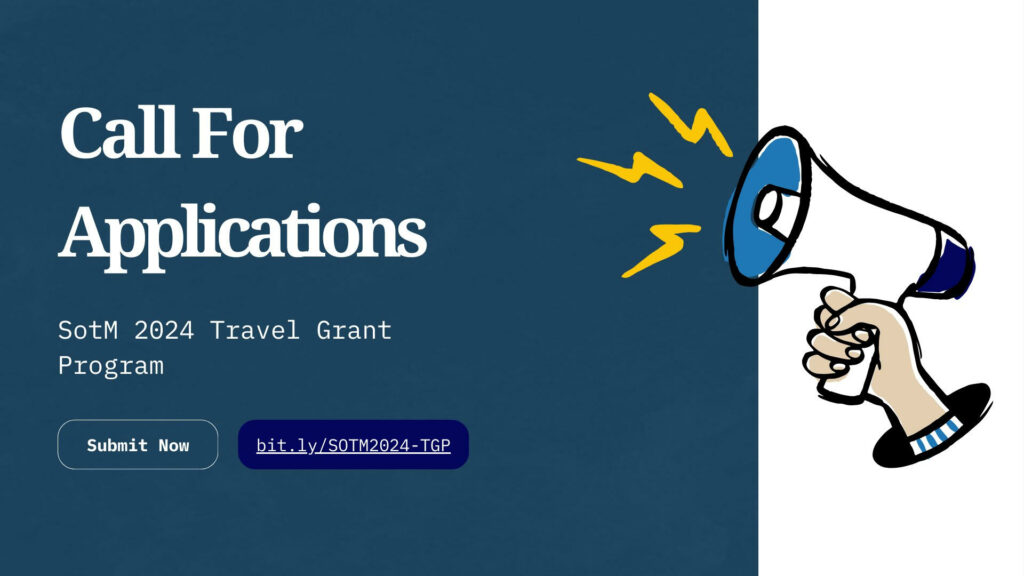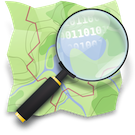2024 is already moving fast. The new OSMF Board is working hard, digging into their focus areas, and implementing the strategic plan. Following the “tradition” of the collective post in 2023, here are a few sentences from each of the Board members on where they want to contribute in 2023.
We welcome your input and participation. Contact us directly or, if you are an OSMF Member, join our monthly Board meeting.
Arnalie
Last year comes by so fast. I am not so proud of what I have accomplished as a board member as I have had some health challenges. It was a learning experience (the success and failures) for me!
This year, I will continue efforts to engage, grow and diversify the OpenStreetMap community, this includes:
- Building more local chapters
- Last year, we have revised the Local Chapters page to clearly state eligibilities and document that are required to submit. In addition; LCCWG is taking the lead role to review applications for potential local chapters as well as taking proactive steps to encourage communities to apply.
- This year, we hope to establish 1-3 new local chapters especially in regions where there is no or less established local chapters. Our newest board member Dani will be my partner on this!
- To learn more about OSMF Local Chapters and how to apply: https://osmfoundation.org/wiki/Local_Chapters
- Growing and diversifying OSMF membership
- Run a membership drive at first to second quarter of the year with volunteer team and community leaders
- Review OSMF WGs, their goals, processes, operations, etc to provide a baseline how to encourage more participation in OSMF WGs
- Review Active Contributor Membership application – ensuring that criteria are fit for people who it wish to benefit
- Exposure to local communities and community projects through community presentation during OSMF board meetings
- Revitalise the Diversity and Inlusion Committee to ensure that it is still fit for purpose and membership makeup/activeness
- Ensuring OSMF’s support to regional and national SotMs (more on this)
- Representing OSMF in various events/conferences to extend our reach (outside OSM, other open communities) and listen to local communities
More on this in my OSM diary: community in the map and at the table: my first year and continuing plans as OSMF board member
If you would like to talk and discuss about community, reach out to me arnalie[at]osmfoundation[dot]org or send me a message (https://www.openstreetmap.org/user/arnalielsewhere)
Craig
When I first joined the Board I had never seen inside of the OSMF organisation so I initially wanted to fix some obvious external problems. But I now hold the post of Secretary and Chair of the Finance committee which has led me to be far more focused on the internal problems that impact on the operations of the Foundation. I am now putting in a lot of effort to improve systems and guide the foundation towards a future where members, corporate members, donors and data users speak of the OSM Foundation as a well managed, highly effective organisation that has a clear view of how it wants to develop in the next decade. My stress is not on making the Foundation bigger, but rather on making it much better at what it already does and then making sure that people know that it is better.
Dani
I am thrilled and grateful to embark on this journey as a member of the Board of the OpenStreetMap Foundation, representing YOU. The opportunity to contribute to such a dynamic and impactful community is both humbling and exhilarating. As I step into this role, I acknowledge that I have much to learn, and I eagerly anticipate the wealth of knowledge and experience that the community members will teach me. My primary goals for this year revolve around fostering a stronger sense of unity within the community, amplifying our fundraising efforts to ensure the sustainability of our initiatives, and serving as a dedicated liaison for all members of the OpenStreetMap community. I approach these objectives with humility and determination, understanding that collaboration and inclusivity are paramount to our success. I am genuinely excited to immerse myself in this vibrant community, to forge meaningful connections, and to work together towards our shared vision of empowering people through open mapping.
Guillaume
2024 will be a pivot year for the OSMF, and as board chairperson, my focus is on making sure that the big changes we have coming up happen smoothly.
The most exciting change will be vector tiles. We will be trying to have about one blog post each month throughout the year as our project progresses. You can already read our first one or play with Paul’s demo.
Our move to the EU is another interesting shift that we will be working on. Brexit has made our life in the UK too complicated, and while a move represents a lot of work, it’s something we have to do. While I have had very promising talks with officials from Luxembourg, we’re also looking at Belgium. Ease of doing business, community presence, OpenStreetMap usage, and financial and non-financial incentives all play a role.
This year is the first year when will work under our new budgeting system, letting us easily link every expenditure to the budget. This means we will get better at showing where your donations are going: it’s not only spreadsheets and numbers, but about trust and accountability. It has been the product of a lot of work, started back when I was OSMF treasurer. This will help us fundraise more effectively.
Fundraising is, indeed, an area where we need to work more to be able to achieve our goals. Some of the largest OSM data users don’t contribute at all to keeping it running. We have mostly fundraised from large tech companies (thank you!), and must also expand to other sectors that are part of our ecosystem, including governments, humanitarian NGOs and transit companies, to increase our income’s resilience against market cycles.
Attribution is another key area. It’s not about ego; it’s about creating a funnel for the virtuous circle that improves the map. Our copyright page is the single largest landing page on our site, and due for a revamp, transforming it into a recruitment tool for new mappers and donors rather than just a legal necessity.
Major vandalism incidents in Israel and Ukraine marked us in 2023. We have patched the most vulnerable spots ad hoc, and managed to discourage the vandals. If we could more easily moderate what gets submitted before it hits the API, we would address a core vulnerability and improve data quality. I’m picturing an auto-moderation engine for which DWG could write rules, like an email filter. It would, of course, be a major engineering project and require careful planning.
Improving the reliability of our operations is one of the most rewarding long-term projects. By improving many things a little bit at a time, we’re reducing the areas where our infrastructure is at risk from a single failure. If any of the open tickets inspires you, please help us out.
I have for the last few years worked to encourage the OSMF to hire more staff – we have enough work for a dozen people if we can get the funding. Managing our operations and projects has long been too much for volunteers to handle. I would like to make progress on hiring an executive director for the OSMF to be able to work on ideas like this full time.
These goals suffer not from a lack of vision or talent, but a lack of hands and time. If you care about making these happen, please donate, or join one of our working groups.
Mateusz
Since the start of my activity as an OSMF board member, a bit more than a year ago, I have spent in a total of 390 hours on various OSMF-specific work. Recently it was budgeting discussions but earlier also for example work on ensuring that OpenStreetMap is attributed when required, coordinating contact between organisers of upcoming SotM-EU and memebers of working groups, getting community feedback into strategic plan and various communication – with community in general, working groups and members of both. And a lot of discussions/meetings.
Currently, I am thinking about how the budgeting process can be improved for the next year, based on how it went this year.
I will work further on encouraging to attribute OpenStreetMap, as required by our license.
I also want to spend some time on making clear how we spend money and how we will spend it with more funds raised – both to make clear to the community what is happening with our funds and to encourage potential donors to help us fund cases where smartly spending money can help OpenStreetMap.
I also want to thank for all the work done – by all mappers, people helping as part of working group or without a defined structure, other board members, people who donated money, people who have released various software making it easier to edit or use OpenStreetMap data. And people who use OpenStreetMap data in various interesting and useful ways.
Roland
The volunteers of the Foundation heard in the past years loud and clearly the expectation to get longstanding software work done – on top of maintaining a stable platform including the responsibility for your SRE. For example, vector tiles on osm.org are no longer a vision, but now work in progress.
The board’s job within that framework is to ensure the funding for all of these goals. The board has heard loud and clearly the message last year that there is open homework despite the absoutely honorable mission. Alan Mustard’s keynote at the SotM EU has given a good overview what alreadly is done and what still is ongoing work.
The board will organize finances in a way such that they look much more familiar to people who are used to donate to benevolent causes. And thus the finances also become more transparent to our community than ever has been asked for! I’m very happy that Guillaume has convinced Harrison to bring his expertise in finances of non-profits to OpenStreetMap. The board has started to set up a budget, will maintain a forecast, and seek close communication with the working groups to assure both financial reliability and ensure the working groups can focus on their maximum contribution towards the Foundation’s mission to support OpenStreetMap.
Sarah
This year in the OSMF board has started with intense discussions on budget and spending. Fundraising for all the activities necessary to advance the strategic plan will still be an important task for 2024. But there are other things to organise around that: defining the rules for our financial management, getting some project management in place and learning how to work with our contractors. Last year I’ve also started looking into the practical steps of moving the OSMF into the EU and will continue to work on that throughout the year. Finally, we are celebrating our 20th birthday and I hope to see everybody in Nairobi at SotM to celebrate together.

